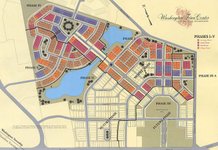Sublime
An inspiration engine for ideas

In 1949, the federal government enacted a new approach to the housing problems of cities: urban renewal. The approach was new both in philosophy—for the first time in America, government was given the right to seize an individual’s private property not for its own use but for reassignment to another individual for his use and profit—and in scope: a
... See moreRobert A. Caro • The Power Broker
Politicians boggled at two political problems that would attend the implementation of the plans: their fantastic cost and the necessity of removing from their path and relocating thousands, even tens of thousands, of voters. For years—decades—in every city in the country, the expressways remained on the drawing boards. In every city, that is,
... See moreRobert A. Caro • The Power Broker
Make "New Towns" to Create Walkable, Bikeable, Transit-oriented Places
Justin Hollanderopen.substack.com
They Built a New City in Guatemala And It's STUNNING
youtube.comAfter a building program that had tripled the city’s supply of playgrounds, there was still almost no place for approximately 200,000 of the city’s children—the 200,000 with black skin—to play in their own neighborhoods except the streets or abandoned, crumbling, filthy, looted tenements stinking of urine and vomit; or vacant lots carpeted with
... See moreRobert A. Caro • The Power Broker
By 1957, $133,000,000 of public monies had been expended on urban renewal in all the cities of the United States with the exception of New York; $267,000,000 had been spent in New York.
Robert A. Caro • The Power Broker
To clear the land for these improvements, he evicted the city’s people, not thousands of them or tens of thousands but hundreds of thousands, from their homes and tore the homes down. Neighborhoods were obliterated by his edict to make room for new neighborhoods reared at his command.
Robert A. Caro • The Power Broker
One approach that has been developed and is likely responsible for the turnaround of many downtown districts is the community economic development model of the business improvement district (BID), which is shown to reduce crime in business areas and improve real estate.6 The BID model relies on special assessments levied on commercial properties
... See more